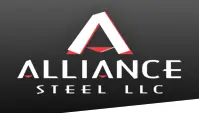Differences Between Hot and Cold Rolled Steel
Do you wonder about the differences between hot-rolled steel and cold-rolled steel? The main difference is how they are processed.
Hot - Rolled steel is rolled at a very high temperature, typically over 1700 ° F, while cold-rolled steel is essentially hot-rolled steel further processed in cold reduction mills.
Beyond the temperature at which the two materials are processed, some other key differences include:
- Surface Quality — Hot-Rolled steel is known to have a scaly finish, whereas cold-rolled steel tends to have a shiny and smooth surface.
- Material Hardness — Cold-Rolled steel has a higher strength and hardness than hot-rolled steel.
- Workability — Hot - Rolled steel is created at higher temperatures, making it easier to shape and form than cold–rolled steel.
Both forming methods utilize rollers to alter a workpiece's shape, uniformity, and mechanical properties, but that's where the similarities end. Therefore, when deciding which material is best for your project or application, it is essential to understand the differences between the two types of material. Although it may seem obvious, different materials will be better suited for specific applications.
Alliance Steel strives to do more than provide high-quality steel products to our customers. We want to help our customers better understand the materials they order. Our advanced knowledge may enable you to save on time, raw material costs, and additional processing. As an ISO 9001:2015-certified material supplier and processor, we can quickly and affordably deliver flat-rolled sheet and coil products in various material thicknesses and specifications.
Hot Rolled Steel
Hot-rolled steel is malleable at high temperatures, enabling it to be rolled into various shapes, forms, and sizes. After forming, the steel is cooled at room temperature, typically leaving a scaly surface finish that techniques like pickling can remove. Hot-rolled steel exhibits better formability making it easier to work with.
What Are the Benefits of Hot Rolled Steel?
Hot-rolled steel requires less processing than cold-rolled steel; hot-rolled steel is typically more cost-effective. Hot-rolled steel is ideal when dimensional tolerances and surface finish aren't as critical. With this method, processed material exhibits better formability and workability.
Other benefits include:
- Eliminates Microstructure Defects
- Improved Mechanical Properties
- Increased Ductility
- Lower Cost
- More Malleable
Hot Rolled Steel Properties
- Scaled Surface
- Slight Distortions
- Slightly Rounded Edges and Corners — Due to shrinkage and less precise finishing.
Applications of Hot Rolled Steel
Hot-rolled steel is a great option when complex or bulky shapes are needed. It's also typically more affordable than cold-rolled steel. However, hot-rolled steel may shrink slightly during cooling, meaning the finished product size and shape are more challenging to control than cold-rolled steel.
Hot-rolled steel suits applications where precise shapes and tolerances aren't critical. Examples include:
- Agricultural Equipment
- Automotive Parts
- Construction
- Railroad Tracks
- Railroad Car Components
- Pipes And Tubes
Cold-Rolled Steel
Cold-rolled steel is typically harder and stronger than hot-rolled steel. Cold-rolled steel typically has smoother, more finished surfaces with closer tolerances than hot-rolled steel. It's best to think of cold-rolled steel as hot-rolled steel that is further processed. The material is cooled to room temperature, followed by annealing and/or temper rolling. Due to the additional processing, cold-finished products come at a higher price.
What Are the Benefits of Cold Rolled Steel?
Cold rolling allows the creation of exact shapes since workpieces don't shrink. Other benefits include:
- Higher Strength
- Greater Precision
- Better Surface Finish — Smooth and shiny surface.
Applications of Cold Rolled Steel
Cold-rolled steel is perfect for projects where tolerances, surface condition, concentricity, and straightness are essential such as:
- Aerospace Parts
- Home Appliances
- Metal Furniture
- Mechanical Components
- Roofing And Wall Systems
Partner With Us
When you need flat–rolled sheets and coils, understanding which material is most applicable can help you avoid overspending on raw materials and save time in the long run. For high-quality hot-rolled and cold-rolled steel products, turn to the experts at Alliance Steel, an ISO 9001:2015-certified steel supplier.
Our team can help you determine which steel is suitable for your use. In addition, we offer an array of value-added services to streamline your supply chain.
- Coil Slitting
- Heavy-Gauge Slitting
- Narrow Coil Slitting
- Multi-Blanking and Cutting To Length
- Stretcher Leveling
- Laser Cutting
- Logistics And Transportation
- Metallurgical Testing
- Cold Reduction
- Toll Processing and Storage
Feel free to contact us for more information about hot-rolled and cold-rolled steel. We're happy to discuss your needs in greater detail.

